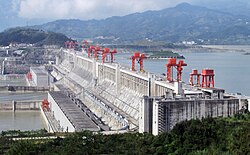This article is written like a personal reflection, personal essay, or argumentative essay that states a Wikipedia editor's personal feelings or presents an original argument about a topic.(August 2022) |

A technological fix, technical fix, technological shortcut or (techno-)solutionism is an attempt to use engineering or technology to solve a problem (often created by earlier technological interventions). [1]
Contents
- Contemporary context
- Algorithms
- Climate change
- Renewable energy
- Climate engineering
- Externalities
- Algorithms 2
- DDT
- Automobiles
- Different types of technological fixes
- High-tech megaprojects
- Intermediate technology
- Appropriate technologies
- Concerns
- See also
- References
Some references define technological fix as an "attempt to repair the harm of a technology by modification of the system", that might involve modification of the machine and/or modification of the procedures for operating and maintaining it.
Technological fixes are inevitable in modern technology. It has been observed that many technologies, although invented and developed to solve certain perceived problems, often create other problems in the process, known as externalities. In other words, there would be modification of the basic hardware, modification of techniques and procedures, or both. [2]
The technological fix is the idea that all problems can find solutions in better and new technologies. It now is used as a dismissive phrase to describe cheap, quick fixes by using inappropriate technologies; these fixes often create more problems than they solve or give people a sense that they have solved the problem. [3]








